Bulbophyllum vaginatum (Lindl.) Rchb. f.
| Etymology | Genus | Bulb-leaf, referring to the leaf growing from the pseudobulb |
|---|---|---|
| Species | Having a sheath | |
| Family | Orchidaceae | |
| Synonyms | Bulbophyllum whiteanum (Rolfe) J.J.Sm., Cirrhopetalum caudatum Wight | |
| Common Names | Vaginated Bulbophyllum | |
| Status | Native: Endangered | |
| Form | Epiphyte | |
| Native Distribution | India, Sri Lanka, Indochina, Malesia | |
Diagnostics:
Bulbophyllum vaginatum is one of the two most common epiphytic orchids on urban trees (the other being Dendrobium crumenatum), helped by the fact that they are actively planted for their spectacular flowering. The leaves are thick, short, narrow and curved downwards. The pale yellow flowers with long tails are distinctive.
It can be easily mistaken for the fern, Pyrrosia lanceolata as they occupy the same habitat with similar form. However, the leaves of P. lanceolata does not have peusdobulbs, have more tapered leaf tips, and generally point around hapzardly instead of downwards.
Interesting Facts:
Flowering of the Vaginated Bulbophyllum occurs gregariously after a period of rain, probably triggered by a drop in ambient temperature.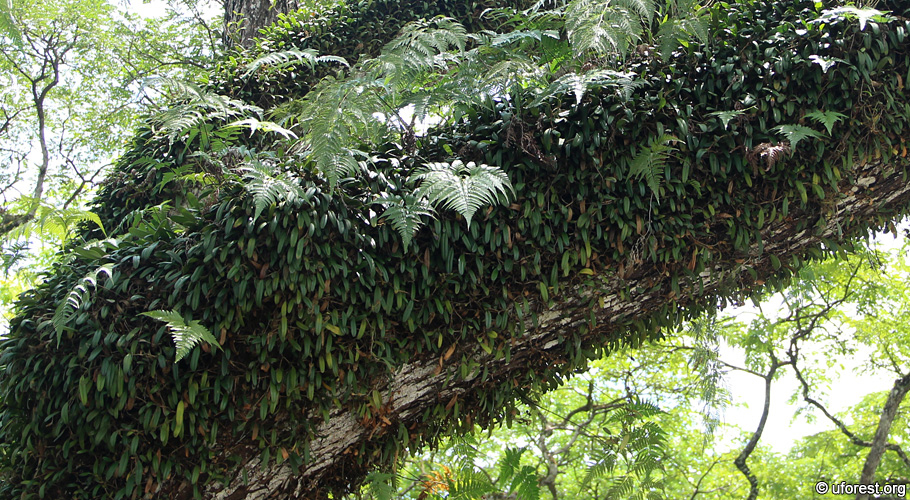
The stem of the Rain Tree covered by the epiphytic Vaginated Bulbophyllum.
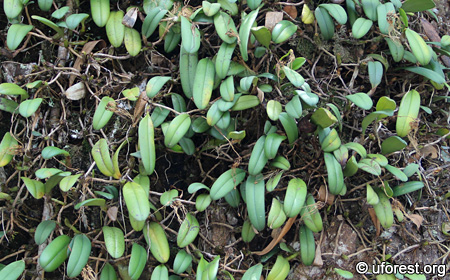
The leaves are curved downwards.
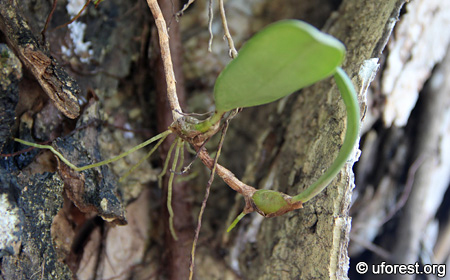
The pseudobulb.

Pale yellow flower of the orchird.
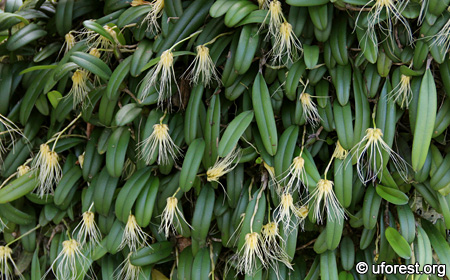
Gregarious flowering.
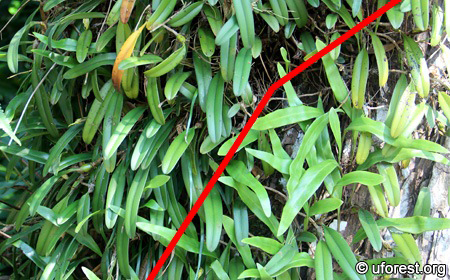
Comparison with Pyrrosia lanceolata growing just beside the orchid.
Posted: 2013-09-21 / Modified: 2018-01-16